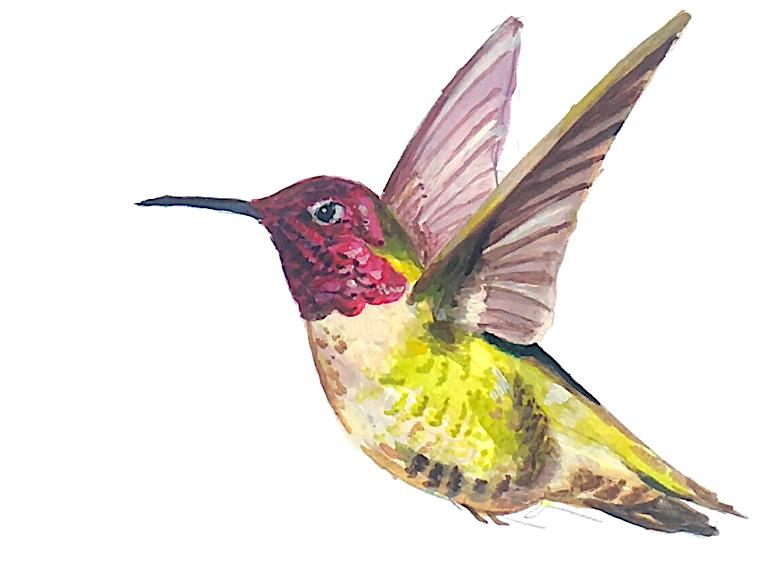
5 minute read
Campus Birds
from Issue 26
BY HAYLEY RETTIG ART BY MELINA CHRISTENSEN
Have you ever wondered why every Friday there’s a crowd of 20 people in front of the Slater Museum? Have you ever been walking around campus and had people with binoculars blocking your path? Have you ever tried to spot whatever they were staring at and not seen anything? If you answered yes to any of these questions, you’ve had an encounter with the campus bird walks! These bird walks have been occurring on campus since 2016 and are led by Will Brooks (’20). Bird walks are open to anyone and everyone. There does tend to be a slight attendance bias towards science students, but many faculty members and non-science students regularly participate. Sometimes even people from the offcampus community join in. Walks usually last about an hour (depending on the weather) and consist of strolling around campus looking for local birds. Some of the regular stops along the walk include President’s Woods and the large trees near McIntyre. However, not everyone has time to dedicate an hour each week to walking around campus looking at birds. That’s what this guide is for! This is your DIY identification guide to some of the most common birds on campus that might otherwise fly under the radar.
Advertisement
Our first bird is the Dark-eyed Junco (Junco hyemalis). These songbirds are a type of sparrow that can frequently be found foraging on the ground in any patch of dirt on campus, as sparrows often do (1). Juncos are recognizable from their characteristic dark head that makes them look like they’re wearing little robber hoods. Another characteristic trait are their white feathers on either side of the tail, which can be seen when Juncos are in flight. Once you start looking underneath bushes and shrubs, you’ll immediately start noticing these little birds. Their song is a two-note trill that sounds like someone rapidly playing the same two notes on a piano over and over (but a little less musical). While Juncos might not be the flashiest birds on campus, they certainly are some of the most abundant.
ABOVE: Anna’s Hummingbird
Another surprisingly common bird on campus are Anna’s Hummingbirds (Calypte anna). Ask anyone on campus who owns a hummingbird feeder and they’ll tell you that they love these charismatic little birds. Anna’s Hummingbirds are no longer than four inches, but make up for their lack of size with their big personalities. Multiple times, there have been hummingbirds that hover no more than three or four feet away from the bird walk group. Anna’s Hummingbirds truly have no fear. These birds have light green bodies that stand out when they’re perched on top of small trees. The males have a set of reddish-pink feathers covering their face and because of their iridescence, these feathers look best in direct sunlight (2). The hummingbirds that you’ll see most often on campus are the males, who set up and defend territories from other rival males. This means if you see a hummingbird hanging out in a certain spot over and over again, you’ve probably just found its territory. One good spot to look is in the smaller trees between Thompson and Wyatt. You can also listen for its song, which consists of high thin buzzing and chipping notes.
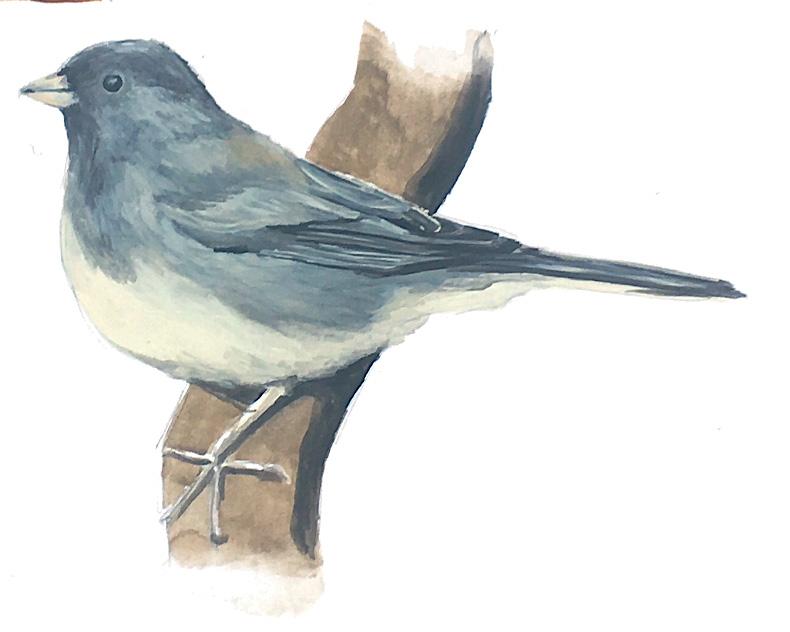
While on the topic of very small birds, another little bird on campus is the Pacific Wren (Troglodytes pacificus). While you probably haven’t ever seen this bird, you’ve almost definitely heard it singing from across campus. Pacific Wrens are not very flashy birds; they’re small, brown, and very elusive. If you ever catch a glimpse of them, Pacific Wrens are recognizable by their small round body and tail that sticks almost straight up (3). Realistically, you’re going to hear this bird long before you ever see it. If you’ve ever been walking around campus at night and wondered what bird is singing at the top of its lungs, that’s the Pacific Wren. Their song consists of all kinds of jumbled-up notes and lasts anywhere from 15–20 seconds (3). So, the next time you hear birdsong out by the library at night, you can rest easy knowing it’s just a little brown bird singing its heart out.
Moving to a slightly larger scale we have the most obvious woodpecker on campus, the Northern Flicker (Colaptes auratus). These are the ones that you see drilling holes into the S.U.B. every spring. Flickers are medium-sized birds with brown backs, black speckles, and a black “collar” across their front. Males have two bright red patches on both cheeks (4). Like the Pacific Wren, Flickers are another bird you’re more likely to hear than see. Their call is often described as a “kleer” and the sound carries over a great distance (4). Unlike most woodpeckers, you can often see Flickers foraging for food on the ground. When startled off the ground, Northern Flickers reveal their characteristic white rump. While not the only woodpeckers we get on campus, Flickers certainly are some of the boldest.

RIGHT: Barn Swallow
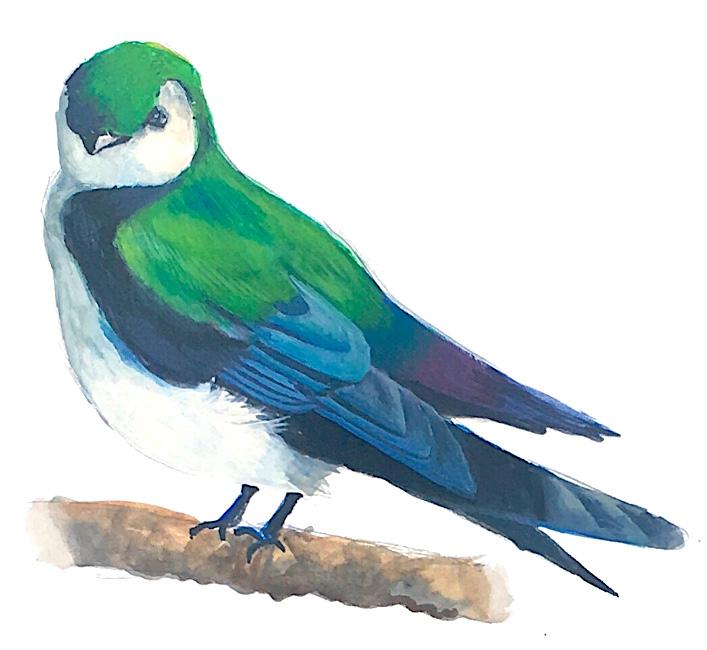
LEFT: Violet-Green Swallow
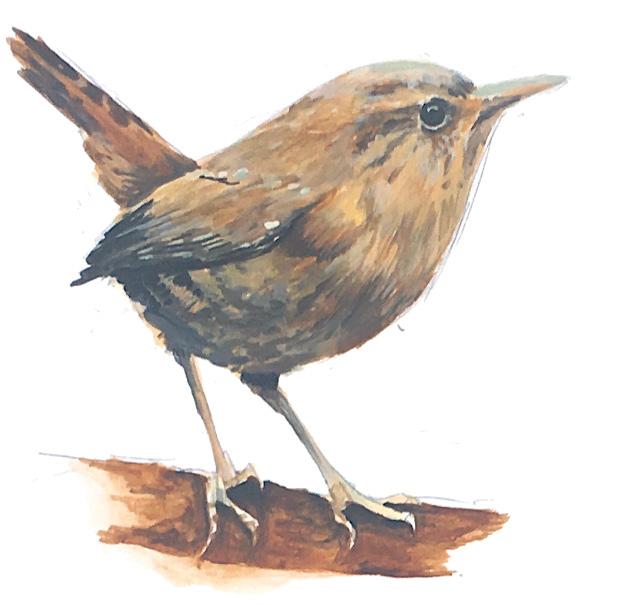
LEFT: Pacific Wren
ABOVE: Northern Flicker
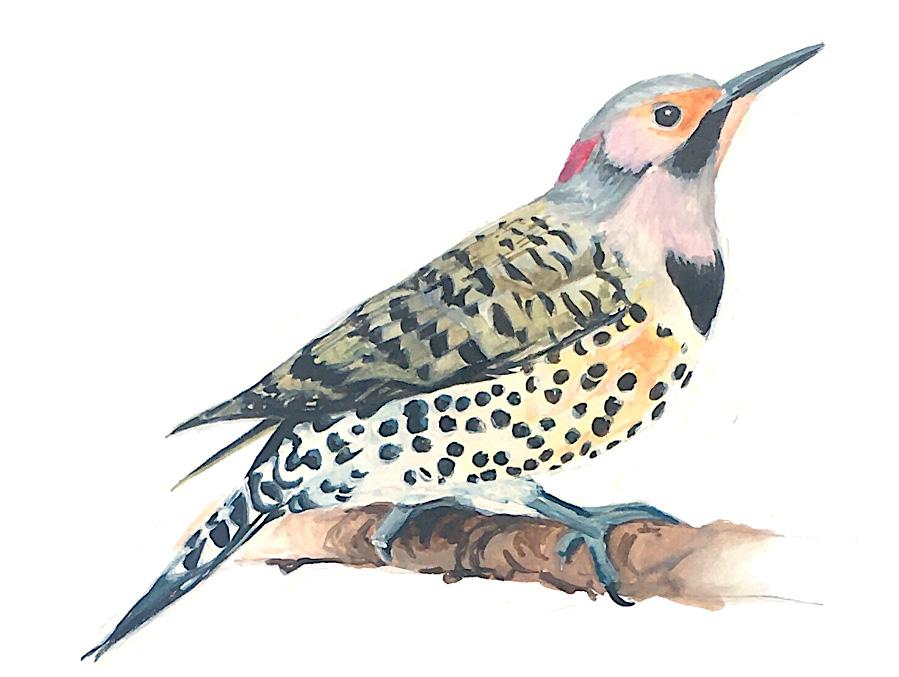
Our last birds are those whose arrival indicates that spring has sprung. Barn Swallows (Hirundo rustica) and Violet-green Swallows (Tachycineta thalassina) migrate to campus from their wintering grounds in Mexico in order to breed (5). If you have any friends who are birders, you might have heard about the Barn Swallow nest on top of a light fixture near the S.U.B. When not using outdoor lamps as nest sites, both species of swallow can be seen performing aerial acrobatics over Todd Field. When looking at all those swallows flying around, telling Barn apart from Violet-green can seem pretty daunting. But it’s actually pretty simple! Barn Swallows typically have yellow bellies, heavily forked tails, and dark blue backs (5). Violet-green Swallows (as the name suggests) have violet and green backs, no fork in their tails, and white bellies (6). Keep an eye out this spring as you enjoy the warmer weather!
While this is not a completely comprehensive guide, hopefully now you can walk around campus with a little bit more knowledge about what’s out there in the President’s Woods. So, the next time you see that group of people with binoculars blocking your way to class, ask them if they’ve seen anything cool that day. Don’t forget to always keep an eye (and an ear) out for the birds that call our campus home! Good luck and good birding!










